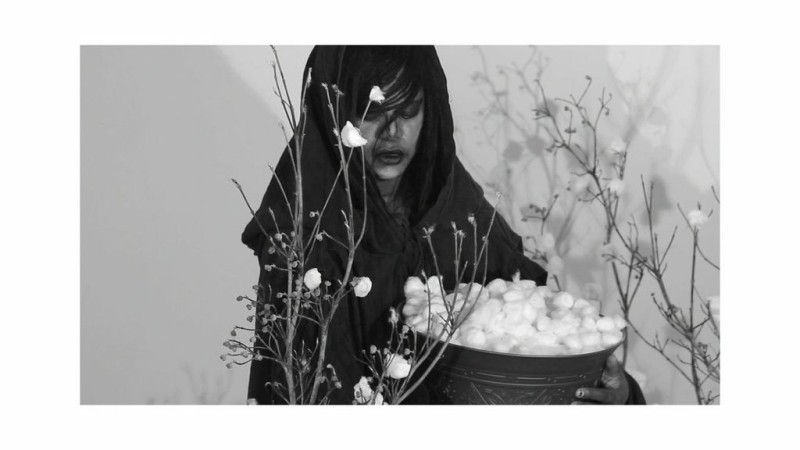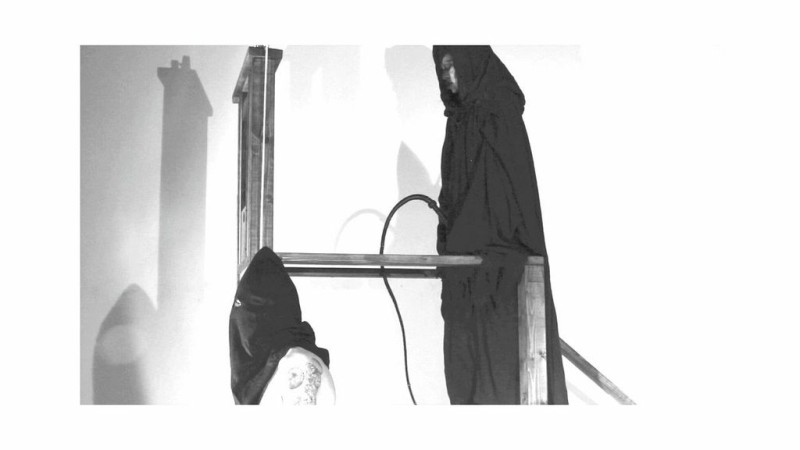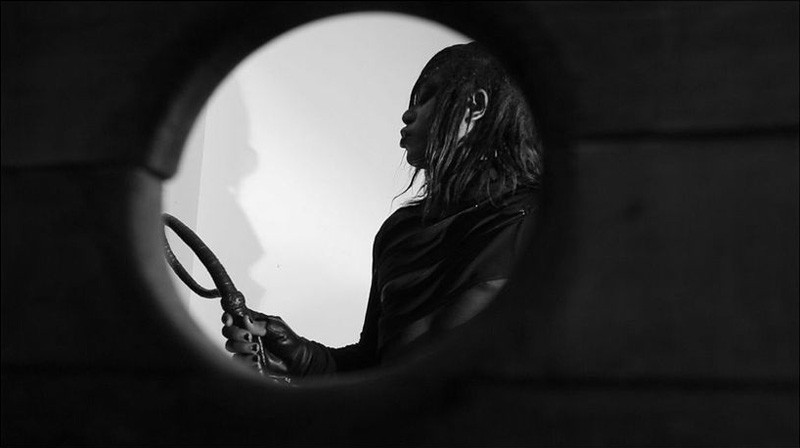Harsh light reflects off the pale skin of a naked man kneeling on the floor, his hands and head caught between the wood slats of a pillory. His body is held in torture in a suspended state of grueling physical, psychological and social punishment.
It’s not everyday one encounters public punishment like this, but artist and musician M. Lamar jolts and startles throughout in his solo exhibition Negrogothic, on view in the Walter and McBean Galleries through Feb. 28.
In Discipline 1 (2014), due to the way the pillory constrains his body, the sufferer’s long, dirty blond hair hides his face, making him anonymous all but for his voice — he reads aloud from a stack of texts seminal to a critical race theory class: Cornell West, Toni Morrison and Hegel, which battles in the gallery with Lamar’s chilling countertenor. Lamar’s musical power reverberates throughout the darkened exhibition space; the sounds from other videos create an eerie backdrop for this public sentence. Negrogothic is epic, with videos, still images, sculpture and performance that engage in the way disenfranchised bodies intersect with power, social order and history. And the audience is a participatory spectator.

At the heart of the exhibition are the videos presented in black and white, with smoke, dramatic lighting, slow motion, operatic performance and capes to boot. But a somber intensity weighs down any theatrics as the videos center on loaded visual icons that are the unfortunate archetypes of the U.S.’s history of violence against black bodies — whips, ropes, cotton, and even the speculum oris, a device used to pry slaves’ mouths open in order to force-feed them. Lamar takes these historical accouterments and re-contextualizes them for his own strategic social critique.
The exhibition largely revolves around the video Surveillance Punishment and the Black Psyche, Part Two, Overseer (2014). Employing a tragic visual punning, Lamar uses these icons to explore their many possible metaphoric meanings — bait-and-switches that can, at times, be difficult to watch but are nonetheless poignant. The long black whip is a prominent character in Surveillance, presented as a menacing disciplinary tool. When held and carried by a white shirtless man, it carries out its most simple threat, which is to be seen. Like its title suggests, surveillance punishment is enacted not by the man using the whip to whip another body but to induce a visual threat. Order is embedded into the psyche by fear of what could happen, not by what actually does.

In other moments in the video, the whip acts as a phallus that is chopped off in an ominous guillotine — the full-scale prop looms in the middle of the gallery space, offering an all-too-tactile emphasis. In another scene, Lamar anally inserts the whip’s handle into three white men who are crouched on all fours. This is not just a reversal of a power dynamic, though many pieces, including the aforementioned Discipline 1, could be quickly read as such. Lamar depicts power as an exchange, of which he is not always in control.


